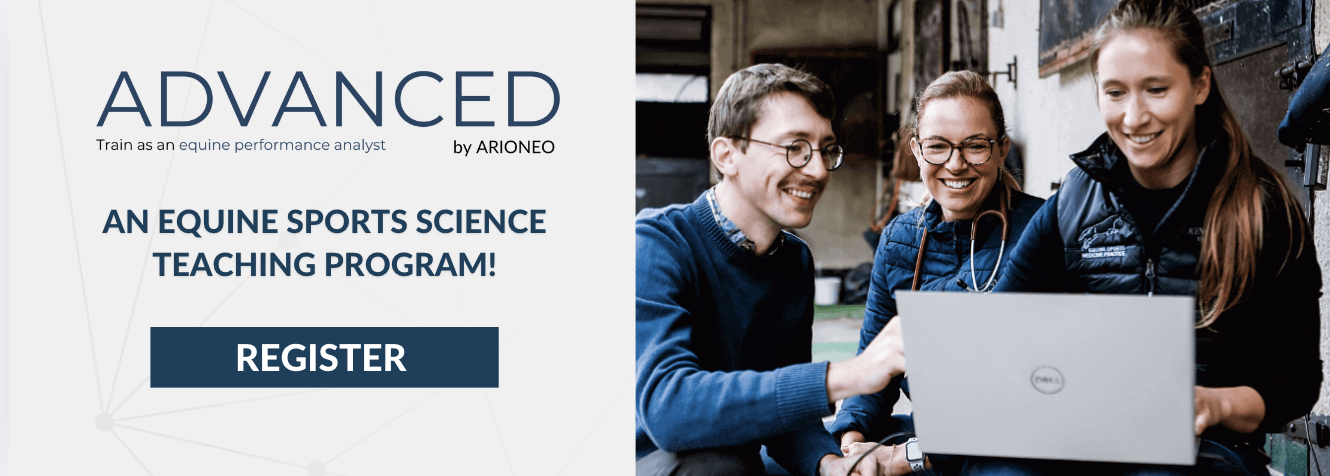Nick Pinkerton, a prominent figure in the horse racing industry for over 30 years, shares his unique experience and innovative vision for the future of the sector. Currently working as a data analyst at Phillip Stokes Racing, he relies on tools like Equimetre to optimize horse performance while prioritizing their well-being.
In this interview, Nick reflects on his career, his involvement in the Advanced program, and his ambitions to revolutionize equine performance analysis through data science.
Could you introduce yourself?
My name is Nick Pinkerton, and I have spent the last 30 years immersed in every aspect of the racing industry. Over the course of my career, I’ve had the privilege of working alongside trainers, riders, owners, bloodstock agents, and form analysts. A large part of my work has revolved around data analysis, with a primary focus on accurately evaluating performance levels—an area I am particularly passionate about.
I currently work at Phillip Stokes Racing, where I specialize in analyzing Equimetre data. My role involves collecting and processing this data daily, extracting key insights, and sharing them with the relevant team members within the stable.
What motivated you to enroll in the Advanced training?
The main motivation behind my enrollment in the training program was driven by two key objectives.
First, I wanted to deepen my understanding of the available data and gain a clearer grasp of the purpose and importance of each data point. Second, I aimed to develop the skills needed to create graphs and other visual tools, allowing me to present reports to trainers in a streamlined dashboard format—clear, concise, and easy to interpret at a glance.
In your opinion, what has been the main added value of the training in your daily life?
Data is an invaluable resource for enhancing a trainer’s expertise, though it should never be seen as a replacement. Instead of providing direct answers to a trainer’s questions, data assigns measurable values to specific factors that trainers can explore in greater depth.
One of the key advantages I’ve gained from my training is the ability to use data to quantify the impact of changes made to a horse’s regimen. When a trainer adjusts certain aspects of a horse’s preparation, data provides a clear, measurable assessment of the results. Similarly, when a trainer seeks to replicate a horse’s past racetrack performance in a new preparation, data becomes an accurate tracking tool, enabling meaningful comparisons across different preparations.
Of course, every trainer has unique priorities for their horses. Some may focus on speed, others on recovery, or on stride adjustments and other nuances of movement. What I’ve found most valuable is that, with its graphs and visual tools, the Equimetre product provides tailored solutions to address all these needs—and more.
Could you share a concrete example of where the program had a positive impact or where the courses were particularly helpful to you?
The Advanced training had a profound impact on me, particularly in expanding my understanding of the three principal systems of a horse’s anatomy. Initially, I expected the program to focus solely on analyzing the data we collected, but it went far beyond that. I gained a much deeper appreciation for the critical roles played by the muscular, skeletal, and cardio-respiratory systems in a horse’s performance.
One of the most valuable lessons from the training was the distinction between workloads designed to condition these systems and those aimed at training them. This became a key point of discussion within our group as we reflected on whether enough emphasis was placed on conditioning, especially on the three types of muscle tissues—cardiac, skeletal, and smooth.
This insight was transformative, as it helped us understand how proper conditioning forms the foundation for peak performance. By addressing the specific needs of each muscle type, we could optimize the subsequent training to enhance the horses’ speed, strength, and power.
Ultimately, the goal of racehorse training isn’t just to produce fitter horses but to develop ones that are faster, stronger, and more powerful. This holistic approach was a key takeaway from the program, and it continues to guide my work.
What is your perspective on the integration of data in the racing or sports world?
I firmly believe that the integration of data is a true game changer. I’ve been fortunate to witness its transformative power firsthand through my brother, who has spent the past 20 years applying data and sports science to athletic and human performance fields. His work has shown me just how revolutionary data can be in the world of sports.
Horse racing, in particular, is an industry where nearly every aspect is measurable and quantifiable. For me, it’s a no-brainer that embracing more sophisticated datasets can drive significant advancements in the sector.
A standout example of this, especially here in Australia, is the remarkable progress achieved by Ciaron Maher Racing. By establishing a dedicated sports science and data department to analyze equine performance, they have seen extraordinary growth in their operation. This success story serves as an inspiring benchmark for the rest of us to strive toward, illustrating the immense potential of data-driven approaches in horse racing.
What are your main goals with your Equine Performance Analysis project? And how do you plan to make these tools accessible to trainers worldwide?
For me, the success story of Ciaron Maher Racing is both a key source of inspiration and a benchmark for my own aspirations. Ciaron’s remarkable achievements were made possible through significant financial investment and the support of a large, dedicated team driving innovation. However, I recognize that this level of resources and commitment is beyond the reach of most trainers. Many operate on a much smaller scale, with limited opportunities or means to expand to such heights.
This is where I see immense potential for an equine performance analysis and assessment hub—a centralized platform where trainers could submit their data and receive fast, comprehensive assessments and reports. In addition to this, the hub would offer a variety of educational resources to help trainers better understand and apply the insights drawn from the data.
In my vision, such a hub would create economies of scale, offering trainers of all sizes access to the benefits of advanced equine performance data at a fraction of the cost required to build these capabilities independently. By pooling resources, this approach could level the playing field, empowering trainers to enhance their performance and results without the burden of significant financial investment.
This project is at the heart of my current work, and I warmly invite anyone interested in contributing to its development to get in touch. Similarly, I encourage trainers who see potential value in the services this hub could offer to reach out and connect with me.
What would be the three values that would describe best the Advanced program to you, in the horse industry?
First and foremost, I was struck by the strong emphasis placed on understanding a horse’s anatomy and the vital role of proper training to minimize the risk of injury. I was especially impressed by the wealth of educational material provided by veterinarians worldwide, which underscores the importance of training, conditioning, and load management in reducing injury risks. This focus stood out as one of the program’s most valuable aspects.
Secondly, the depth of available data is truly remarkable. The range of variables that can be analyzed—such as speed, recovery, and locomotion—offers nearly limitless opportunities for gaining deeper insights. This capability also enables the early detection of potential pathological issues, which left a lasting impression on me.
Lastly, one of the program’s greatest strengths is its ability to turn complex data into something clear and easy to understand. With the help of visual tools and charts, the information becomes not only accessible but also highly actionable.
We are committed to promoting well-being while striving for performance. Did you feel this focus during the program?
Absolutely—I could really feel it. The educational material provided by the vets clearly demonstrates that equine welfare and well-being are top priorities for everyone involved. Additionally, the extensive support resources available for those in training further emphasize this commitment. It’s evident that the well-being of both horses and humans is at the core of the program.
There is also a strong focus on understanding the early signs of potential pathological issues, which was consistently highlighted throughout the training. Another standout aspect is the program’s ability to simplify complex data, transforming it into something clear and easily understandable through the use of visual tools and charts.
Thank you, Nick, for sharing your journey with us. We look forward to seeing the continued success and advancements that you and all our alumni will bring to the field of equine sports science. We wish you every success as a data analyst.
For those interested in learning more about the Advanced program and how it can benefit your career, please visit the Advanced webpage.
Contact:
📞 +61 400 474 414
Key Words: advanced, Arioneo Institute, program, training, equine data analyst, horse performance analyst, sport science horse, equine sport science, training program equine, equine learning, equine careers, horse career, equimetre, data analyst.


